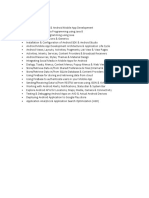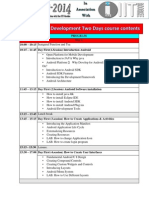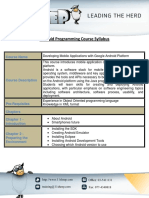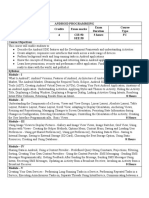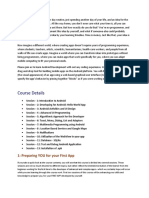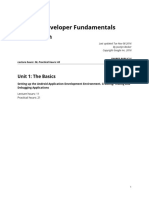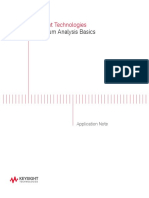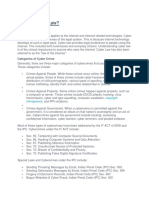L T P C
Mobile App Design and Development
3 0 0 3
UNIT – I Overview of Mobile App Development 9
Mobile Application Development - Mobile Applications and Device Platforms - Alternatives for
Building Mobile Apps -Comparing Native vs. Hybrid Applications -The Mobile Application
Development Lifecycle-The Mobile Application Front-End-The Mobile Application Back-EndKey
Mobile Application Services-What is Android-Android version history-Obtaining the Required Tools-
Launching Your First Android Application-Exploring the IDE-Debugging Your Application-Publishing
Your Application
UNIT – II User Interface Design 9
Understanding Activities-Linking Activities Using Intents-Fragments-Displaying Notifications-
Understanding the Components of a Screen-Adapting to Display Orientation-Managing Changes to
Screen Orientation- Utilizing the Action Bar-Creating the User Interface Programmatically Listening
for UI Notifications
UNIT – III UI Components, Data Storage and Preferences 9
Using Basic Views-Using Picker Views -Using List Views to Display Long Lists-Understanding
Specialized Fragments - Using Image Views to Display Pictures -Using Menus with ViewsUsing
WebView- Saving and Loading User Preferences-Persisting Data to Files-Creating and Using
Databases.
UNIT – IV Data Sharing and Location-Based Services 9
Sharing Data in Android-Creating Your Own Content Providers -Using the Content Provider- SMS
Messaging -Sending Email-Displaying Maps- Getting Location Data- Monitoring a Location.
UNIT – V Web Services and Threading 9
Consuming Web Services Using HTTP-Consuming JSON Services- Creating Your Own Services -
Binding Activities to Services -Understanding Threading .
Course Outcomes:
Upon completion of the course, students will be able to:
CO1 : Describe the mobile app development process, platform types, and Android development
Environment.
CO2 : Develop Android activities and interfaces using views, intents, and fragments
CO3 : Implement persistent data storage using preferences, files, and SQLite databases
CO4 : Integrate device capabilities such as messaging, maps, and location services into Android
Applications.
CO5 : Build responsive Android apps that consume web services and manage background tasks with
multithreading
TOTAL: 45 PERIODS
TEXT BOOKS:
� 1. Jerome DiMarzio, “Beginning Android Programming with Android Studio”, 4th Edition.
REFERENCES:
1. Dawn Griffiths, David Griffiths, “Head First Android Development: A Brain-Friendly Guide”,
2017.
2. Neil Smyth , “Android Studio 3.0 Development Essentials: Android”, 8th Edition.
3. Pradeep Kothari, “Android Application Development (With Kitkat Support)”, Black Book 2014.
WEB REFERENCES:
1. https://developer.android.com/guide
2. https://en.wikipedia.org/wiki/Android_10
3. Develop App for Free
4. https://flutter.dev/
5. http://ai2.appinventor.mit.edu
6. https://en.wikipedia.org/wiki/Android_version_history
7. https://aws.amazon.com/mobile/mobile-application-development/
https://en.wikipedia.org/wiki/Mobile_app_development
CO PO PSO
1 2 3 4 5 6 7 8 9 10 11 12 1 2 3
1 3 2 3 - 2 - - - - 2 - 2 3 3 2
2 3 2 3 2 2 - - - - 2 - 2 3 3 3
3 3 3 3 2 3 - - - - 1 - 2 3 3 2
4 3 3 3 2 3 - - - - 2 - 2 3 3 3
5 3 2 3 1 3 - - - 2 2 - 2 3 3 3
1 - low, 2 - medium, 3 - high, ‘-“- no correlation




